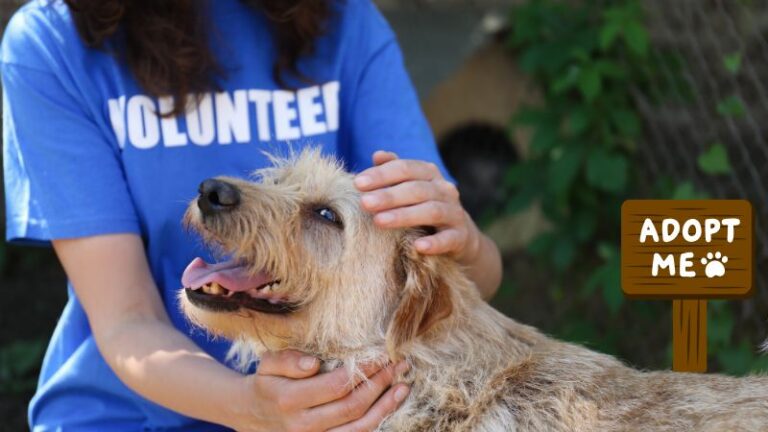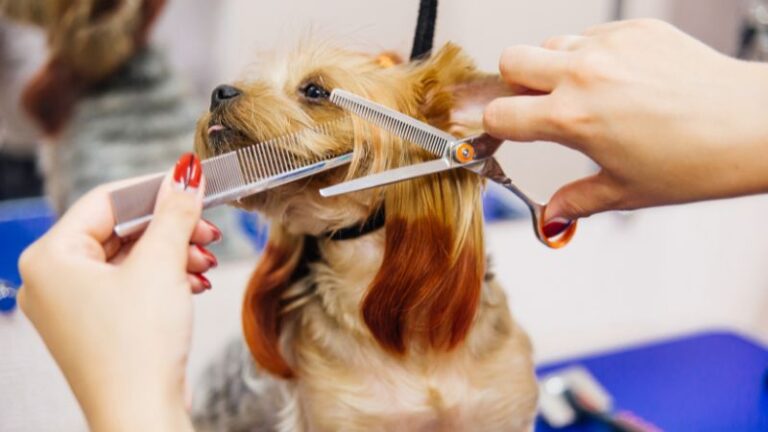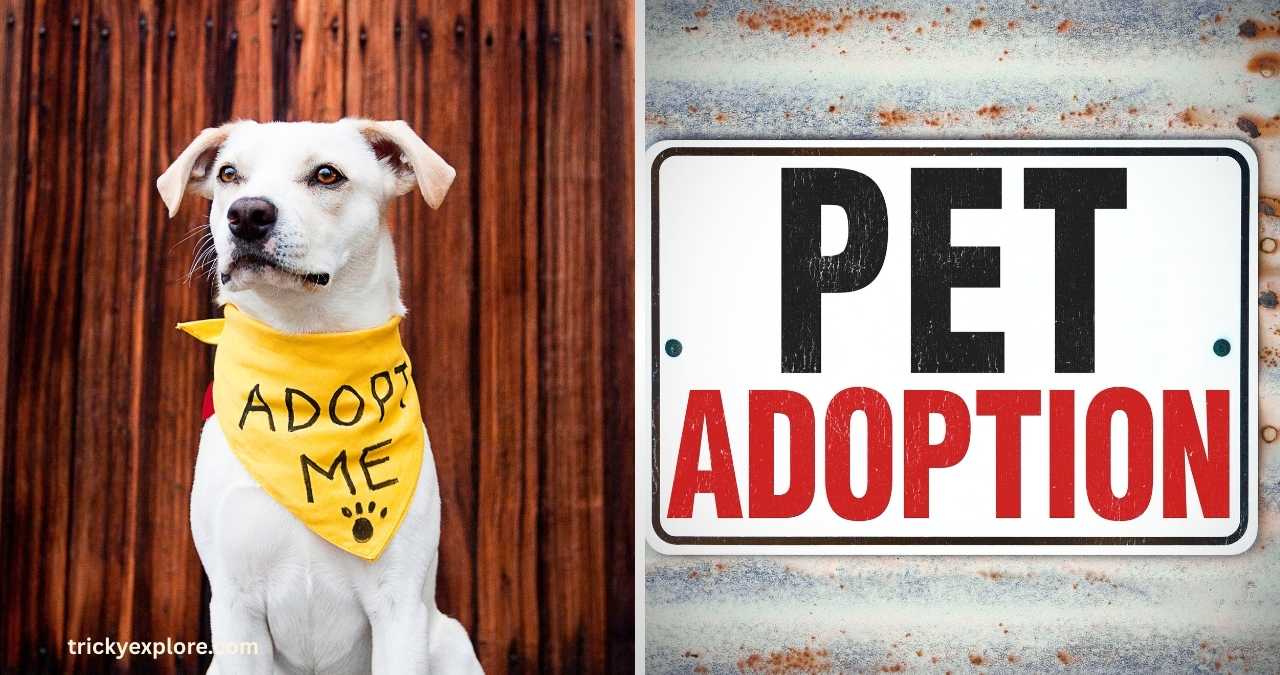Table of Contents
ToggleIntroduction: Why Pet Adoption Matters
Picture this: a wagging tail, a purring companion, or a playful paw tapping your hand. That’s the joy of pet adoption! In 2025, adopting a pet is more than just bringing home a furry friend—it’s about saving a life, building a bond, and adding love to your home. Whether you’re a first-time pet parent or a seasoned animal lover, pet adoption is a rewarding journey. But where do you start? What should you know? This guide walks you through every step of pet adoption, from finding an adoption center to mastering pet grooming and securing pet care insurance. Ready to welcome a new best friend? Let’s dive into the world of pet adoption!
What Is Pet Adoption?

Pet adoption is the process of taking a homeless animal from a shelter, rescue group, or adoption center into your home. These pets are often abandoned, surrendered, or rescued from tough situations. By adopting, you give them a second chance at a happy life.
Why it matters: Shelters are full of animals waiting for homes. Adopting saves lives and frees up space for other pets in need.
Who can adopt?: Almost anyone! Whether you’re single, a family, or a senior, there’s a pet for you.
What pets are available?: Dogs, cats, rabbits, birds, and even reptiles are up for adoption.
Key takeaway: Pet adoption isn’t just about getting a pet—it’s about making a difference.
Benefits of Adopting a Pet
Why choose pet adoption over buying from a breeder or pet store? The benefits of adopting a pet are endless. Here’s why it’s a win-win:
You save a life: Every adopted pet means one less animal in a shelter or at risk of euthanasia.
Health perks: Adopted pets are often spayed/neutered, vaccinated, and microchipped, saving you time and money.
Emotional rewards: Pets provide companionship, reduce stress, and boost happiness. Studies show pet owners have lower blood pressure and better mental health!
Variety of choices: Shelters have pets of all ages, sizes, and breeds. Want a senior cat or a playful puppy? You’ll find them.
Cost-effective: Adoption fees are typically lower than buying from a breeder. Plus, you avoid supporting unethical puppy mills.
Feel-good factor: Knowing you gave a pet a forever home is priceless.
Example: Sarah, a college student, adopted a shy tabby cat named Luna from a local shelter. Luna’s purrs and cuddles helped Sarah feel less lonely during late-night study sessions. That’s the magic of pet adoption!
Disadvantages of Adopting a Pet
While pet adoption is amazing, it’s not without challenges. Knowing the disadvantages of adopting a pet helps you prepare:
Unknown history: Some pets may have behavioral issues or past trauma. It takes patience to help them adjust.
Time commitment: Pets need daily care, exercise, and attention. If you’re always on the go, this can be tough.
Financial costs: Food, vet visits, pet grooming, and pet care insurance add up.
Adjustment period: Adopted pets may take weeks or months to settle in. Expect some chewed shoes or scratched furniture!
Health risks: Shelter pets might have undiagnosed conditions, though most are screened before adoption.
Pro tip: Be honest about your lifestyle. If you’re not ready for the responsibility, consider fostering a pet first to test the waters.
Step-by-Step Guide to Pet Adoption in 2025

Ready to start your pet adoption journey? Follow these 10 steps to find and welcome your new companion:
1. Assess Your Lifestyle
Before you search for “pet adoption near me,” think about your life. Pets need time, space, and care.
Questions to ask:
Do you have time for walks, play, or pet grooming?
Is your home pet-friendly (e.g., no pet restrictions)?
Can you afford pet expenses like food and pet care insurance?
Example: A busy professional might choose a low-maintenance cat over a high-energy dog.
2. Research Pet Types
Not sure what pet fits you? Explore options:
Dogs: Loyal and active, great for families or runners.
Cats: Independent and cuddly, ideal for apartments.
Small animals: Rabbits or guinea pigs are perfect for kids or small spaces.
Birds or reptiles: Unique but require specific care.
Tip: Visit an adoption center to meet different animals and see who clicks.
3. Find a Reputable Adoption Center
Search for “pet adoption near me” to locate shelters or rescue groups. Look for:
Accredited shelters: Check reviews or affiliations with groups like the ASPCA.
Transparent policies: Good centers share health records and adoption processes.
Local options: Use sites like Petfinder or Adopt-a-Pet to find nearby pets.
Example: In 2025, apps like Petfinder let you filter by breed, age, and location, making it easy to find a match.
4. Visit the Shelter
Once you find an adoption center, visit in person. Why?
Meet pets face-to-face to gauge their personality.
Talk to staff about the pet’s history, health, and needs.
Bring family or roommates to ensure everyone’s on board.
Pro tip: Don’t rush. Multiple visits help you bond with a pet before deciding.
5. Ask the Right Questions
When meeting a pet, ask the shelter:
Is the pet spayed/neutered and vaccinated?
Any known health or behavioral issues?
How does the pet get along with kids, other pets, or strangers?
What’s their energy level?
Key takeaway: Asking questions ensures you pick a pet that fits your home.
6. Complete the Application
Most shelters require an adoption application. Be ready to provide:
Proof of identity and address.
Details about your home (e.g., renter or owner).
References or a vet’s contact info.
Tip: Be honest. Shelters want to ensure pets go to safe homes.
7. Pay the Adoption Fee
Adoption fees vary but often cover:
Spaying/neutering.
Vaccinations and microchipping.
Initial vet exams.
Example: In 2025, dog adoption fees might range from $50–$300, while cats are often $25–$150.
8. Prepare Your Home
Before bringing your pet home, set up:
Essentials: Food, water bowls, a bed, and toys.
Safe space: A quiet area for your pet to adjust.
Pet-proofing: Hide cords, secure trash cans, and remove toxic plants.
Pro tip: Stock up on pet grooming supplies like brushes or nail clippers.
9. Bring Your Pet Home
The big day! When you pick up your pet:
Use a secure carrier or leash.
Introduce them slowly to your home.
Give them time to explore and relax.
Example: When Jake adopted a rescue dog, Max, he let Max sniff every room before introducing toys. Max was wagging his tail in no time!
10. Schedule a Vet Visit
Within a week, take your pet to a vet for:
A full health check.
Updates on vaccinations or flea treatments.
Advice on diet and pet grooming.
Tip: Ask about pet care insurance to cover future vet bills.
Pet Adoption Tips for Success
Adopting a pet is exciting, but it takes effort to make it work. Here are 7 pet adoption tips to ensure a smooth transition:
Be patient:
Adopted pets may be shy or anxious. Give them weeks to adjust.
Example: A rescue cat might hide under the bed at first but will soon cuddle up.
Establish a routine:
Feed, walk, and play at consistent times.
Pets thrive on predictability.
Invest in training:
Sign up for dog obedience classes or learn cat behavior tips.
Training strengthens your bond.
Master pet grooming:
Brush your pet weekly to reduce shedding.
Trim nails monthly or visit a groomer.
Example: Regular brushing kept Bella, a long-haired dog, tangle-free and happy.
Get pet care insurance:
Plans cover accidents, illnesses, and routine care.
Compare providers like Trupanion or Healthy Paws.
Socialize your pet:
Introduce them to new people, pets, and places slowly.
This builds confidence and reduces anxiety.
Join a community:
Connect with other pet parents online or at local dog parks.
Share tips and make playdates!
Key takeaway: With patience and preparation, pet adoption becomes a joyful journey.
Pet Grooming Tips: Keeping Your Pet Healthy and Happy

Pet grooming is more than just a bath—it’s essential for your pet’s health. Here’s how to get started:
Why Grooming Matters
Health benefits: Grooming prevents matting, skin infections, and parasites.
Bonding time: Brushing or bathing strengthens your connection.
Looks good, feels good: A well-groomed pet is happier and more confident.
Basic Grooming Tasks
Brushing: Daily for long-haired pets, weekly for short-haired ones.
Bathing: Every 1–2 months, using pet-safe shampoo.
Nail trimming: Monthly, or when nails click on the floor.
Ear cleaning: Weekly, with a vet-recommended solution.
Teeth brushing: Daily, with pet toothpaste to prevent dental issues.
Grooming Tips
Start slow: Let your pet get used to grooming tools.
Use treats: Reward them for staying calm.
Go pro when needed: Professional groomers handle tough jobs like matting or anal gland expression.
Example: When Lisa adopted a fluffy rabbit, she learned to brush its fur daily to prevent painful mats. Her bunny, Snowball, now loves grooming sessions!
Pro tip: Check YouTube for pet grooming tutorials specific to your pet’s breed or species.
Pet Care Insurance: Is It Worth It?

Vet bills can be pricey, but pet care insurance helps. Here’s what you need to know:
What Is Pet Care Insurance?
It’s like health insurance for your pet, covering:
Accidents (e.g., broken bones).
Illnesses (e.g., infections or cancer).
Routine care (e.g., vaccines or dental cleanings, with some plans).
Benefits of Pet Care Insurance
Peace of mind: No stressing about unexpected vet costs.
Affordable care: Plans start at $10–$50/month, depending on coverage.
Customizable: Choose plans that fit your budget and pet’s needs.
Things to Consider
Exclusions: Pre-existing conditions are often not covered.
Deductibles: You may pay upfront before insurance kicks in.
Premiums: Costs rise as your pet ages.
Example: When Tom’s dog, Rusty, swallowed a toy, surgery cost $3,000. His pet care insurance covered 80%, saving him thousands.
Tip: Compare plans on sites like PetInsuranceReview.com and read reviews before signing up.
Real-World Pet Adoption Stories
Need inspiration? Here are three pet adoption stories from 2025:
Max the Mutt: Emily found Max, a scruffy terrier mix, at a local adoption center. Despite his timid nature, Max blossomed into a playful companion after weeks of love and training. Now, he joins Emily on morning jogs!
Whiskers the Senior Cat: Retiree John adopted Whiskers, a 10-year-old tabby. Whiskers’ calm demeanor was perfect for John’s quiet home. They spend evenings watching TV together.
Bouncy the Bunny: Teenager Mia adopted a lop-eared rabbit from a rescue. She learned pet grooming to keep Bouncy’s fur neat and built a fun enclosure for him to hop around.
These stories show how pet adoption transforms lives—for pets and people.
Conclusion: Your Pet Adoption Journey Starts Now
Pet adoption in 2025 is a life-changing adventure. From picking the perfect pet at an adoption center to mastering pet grooming and securing pet care insurance, every step brings you closer to a loyal companion. The benefits of adopting a pet—like saving lives and gaining a friend—far outweigh the challenges. Whether you’re ready to search “pet adoption near me” or just exploring, this guide has you covered with practical tips and real stories.
Final thought: A pet’s love is worth every effort. Start your pet adoption journey today, and open your heart to a furry friend who needs you!
FAQs About Pet Adoption
What is pet adoption?
Pet adoption is taking a homeless animal from a shelter or rescue group into your home. It gives pets a second chance and frees up shelter space.
How do I find pet adoption near me?
Search “pet adoption near me” on Google, Petfinder, or Adopt-a-Pet. Visit local shelters or check rescue groups’ websites for available pets.
What are the benefits of adopting a pet?
Adopting saves lives, offers health perks (like spayed/neutered pets), and boosts your mood. It’s cost-effective and supports ethical pet care.
What are the disadvantages of adopting a pet?
Challenges include unknown pet histories, time and financial costs, and adjustment periods. Patience and preparation help overcome these.
How much does pet adoption cost?
Adoption fees range from $25–$300, depending on the pet and shelter. Fees often cover vaccinations, microchipping, and spaying/neutering.
Is pet care insurance necessary?
Pet care insurance isn’t mandatory but helps with vet bills. It’s great for peace of mind, especially for accidents or chronic conditions.
How do I groom my pet at home?
Brush regularly, bathe every 1–2 months, trim nails monthly, and clean ears and teeth. Use pet-safe products and start slow to keep your pet calm.








